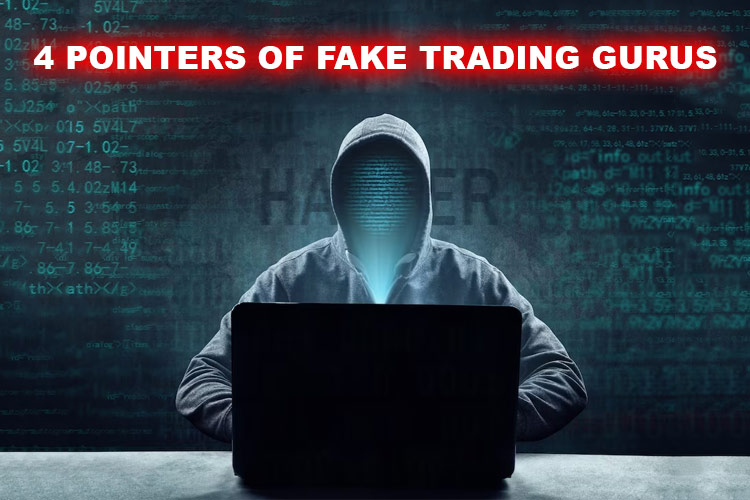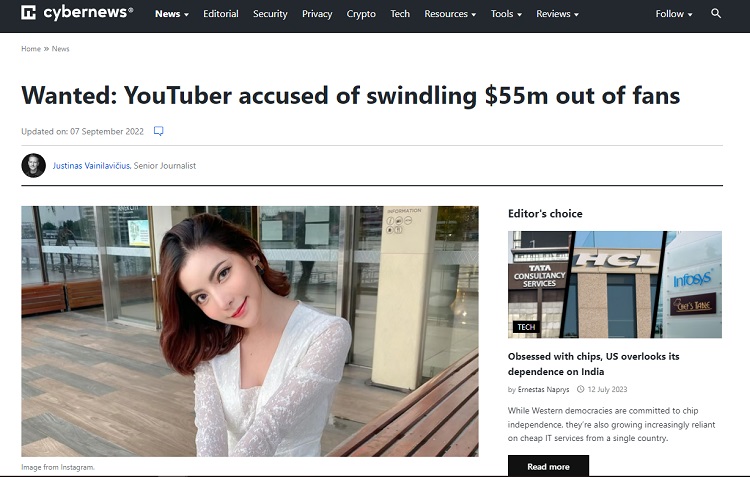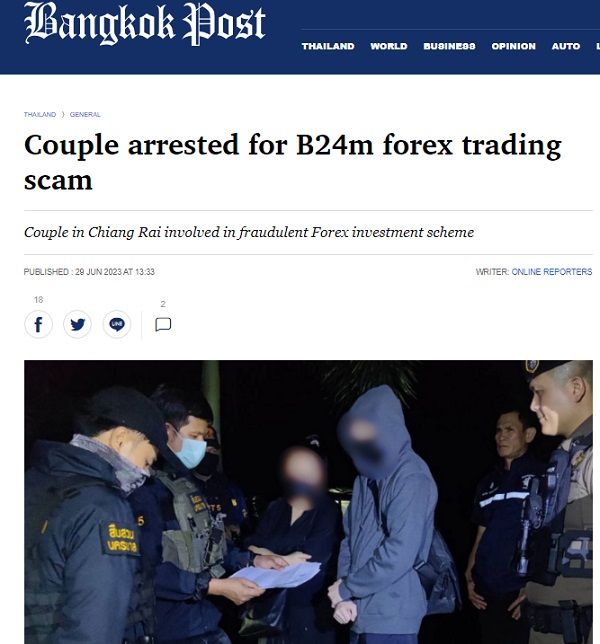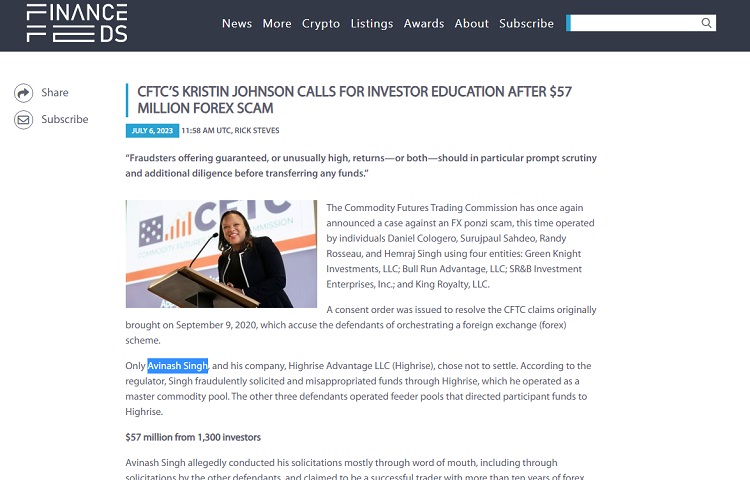Fake trading gurus are everywhere and they might be preying on unsuspecting traders. Make sure you know how to spot them and protect yourself from their schemes.

Trading gurus tend to teach other traders how to make a profit and mitigate losses. On the surface, this can be a great way for newbies to learn from experts. Sadly, not all trading gurus can be trusted. Some fake trading gurus prey on the innocents to make more profits for themselves.
Fake trading gurus often sell 'educational content' for new traders. They may come in the form of online trading courses, trading signal services, and live seminars. They host private Discord servers or other forums to teach about trading 'secrets'.
The problem with fake trading gurus is that they don't show you the risk and problems that come with trading. They would make promises to make you rich and make money quickly, but these are just empty promises.
Some signs to recognize fake trading gurus are:
- They tend to flex their wealth a little too much.
- Their promises seem too good to be true, and that's because it is.
- They usually would tell a sob backstory to gain sympathy.
- For some reason, they always win in all market conditions. There seems to be no story of their losses.
But why can those factors determine whether a trading guru is fake or not? This article will talk more about this matter.
1. Flexing Wealth
Fake trading gurus seem to like flexing their wealth just a little too much to prove to their audience that their success in trading has made it possible for them to own luxurious goods. Usually, a Lambo, a mansion, or both appear in their promotional content. If they have social media, their profile pictures and posts will have a lot of pictures with luxury items; bonus points if they are posting pictures of themselves holding a lot of money.
Real Case Story
Natthamon "Nutty" Khongchak: This famous YouTuber was well known for her K-pop dance cover. On Instagram, she is known to flaunt her lavish lifestyle.
She then switched her ways and portrayed herself as a successful forex trader. She allegedly led her over 300,000 followers on Instagram to believe that she is a trading guru. Thai media said she persuaded her followers to invest in forex by promising them 35% returns.
Naturally, they got angry when her 'students' didn't receive their money each month as she promised. The Thai police now issued an arrest warrant for Kongchak.

2. Over the Top Promises
Fake trading gurus usually give promises that are too good to be true. For example, they might claim to have turned a small account into a huge one in a relatively short time. They might say, 'How I turned a $100 account into a $1000,000 in 7 days, or 'Make $1000,000 day trading in BTC'.
Trading takes time. Although it's not entirely impossible to earn more profits using small capital, it usually has a higher risk. New traders are typically thirsty for quick trading profits and tend to fall into their schemes, not knowing what lies ahead.
Real Case Story
The Kanok couple from the northern province of Chiang Rai are well known to offer forex courses to countless people. This couple's investment courses are called "K1FX Trader Club".
The husband mostly acts as a key instructor. These two promote their courses through many means, including LINE and Facebook. They also promise a minimum monthly return of 5% with 100% capital protection.
They managed to get around 24 million baht before the operations were shut down. The police then launched investigations and arrested the couple.

3. Sad Backstory
A sad backstory seems to be a recurring theme for fake trading gurus. Usually, they will tell stories about how they were the underdog and were very poor before they finally became rich through trading. These fake gurus want to appeal to regular people who want to be rich quickly. Those poor victims saw fake trading gurus as idols and wanted to be like them.
Some successful traders came from less fortunate families, but it took time to gain some profit. Remember that when it sounds too good to be true, that's because it is. Always be careful with their sob story.
Real Case Story
Gurvin Singh Dyal first went viral through a video of him offering money to strangers. In his Instagram profile, he told a sob story about how he is not from a rich family and that his wealth is purely from his hard work. When asked where he got his money, he said he was a forex trader.
He then started teaching people how to trade in forex and introduced a company called GS3 Traders. Through this, he'd also trade on behalf of anyone who wanted to make profits. As it turned out, this company isn't protected by the FCA regulations.
Unfortunately, this firm has over 3,000 case files related to alleged forex scams. The individual losses of this company's victims ranged from £10,000 to £4,000,000.

4. Always Win in Every Condition
The market is unpredictable, so having losses is unavoidable. But that doesn't seem to be the case with fake trading gurus. They are always profitable no matter the market condition, even during market uncertainties that probably sweep out most traders' positions. The truth is, they do experience losses. They're just very good at hiding it.
Remember that a good trading guru will show you all the downsides so you can prepare yourself to face them. They will also teach you to apply a good risk and rewards strategy.
Real Case Story
Avinash Singh and his company, Highrise Advantage LLC (Highrise), allegedly conducted a Ponzi scheme disguised as a forex trading class.
He also offers to manage clients' funds to get profits. Of course, during his trade, Singh only showed a track record of positive gains and no losses.
But, this is not realistically possible since the forex market is unpredictable. Eventually, Singh's scheme managed to steal $57 million from 1300 investors.

Types of Fake Trading Gurus
- Hindsight Guru: A hindsight guru is someone that usually posts regularly. However, their post can be misleading. They will post a stale trade and show that it is a winner enticing you to follow their trading strategy. The problem is, anyone can replicate that by trading on hindsight.
- Ninja Guru: These trading gurus often post several trading setups. When a winning setup gets accomplished, they will post about it all over the internet. This makes other traders believe that their strategies are legit and lead to profits, while in fact, other positions lead to losses.
- Honest Ninja: They post trading setups for others to try. The difference is they post their losses but tamper with the statistics. For example, they might post 6 trades; among those, only 2 setups win and the other 4 lose. They will go around and parade their winning trades but when it comes to the losses, they will show 1 out of 4 losses.
After Thoughts
Looking for other resources to learn about trading is a good thing. After all, trading is complex and the market is always changing, forcing traders to evolve to survive in the market.
This can be challenging for new traders, especially if they don't have anyone to ask for advice from. Many fake trading gurus understand this and see it as an opportunity to grab some money for unsuspecting traders.
Ironically, fake trading gurus do not target rich people but rather those who desperately need a way out of their financial crisis. The fake gurus will appear as a savior that helps these people out of their problems. Come to think of it, those with a good financial status don't go about googling for courses on getting secondary income. Another favorite prey is new traders desperate to gain enormous profits quickly.
As such, the best way to avoid trading gurus is to learn about their traits so you'll know if one tries to scam you.
You can also join a forum to expand your trading circle instead of exposing yourself to the risk of fake trading gurus. Other than that, you can teach yourself through trading books, seminars, and educational materials provided by brokers.

 Dedicated FREE FOREX VPS
Dedicated FREE FOREX VPS Free FOREX Virtual Private Server
Free FOREX Virtual Private Server MT4 Demo Contest, Get $500
MT4 Demo Contest, Get $500 Sign Up for an Account, Claim 60% Deposit Bonus
Sign Up for an Account, Claim 60% Deposit Bonus Free MT4/MT5 VPS 2024
Free MT4/MT5 VPS 2024 Send E-mail and Get Free Merchandise
Send E-mail and Get Free Merchandise $1K Refer a Friend Bonus for Pepperstone Pro clients
$1K Refer a Friend Bonus for Pepperstone Pro clients Maximize Your Earnings with 100% Deposit bonus
Maximize Your Earnings with 100% Deposit bonus Trade to Win, $5,000 Monthly Demo Contest
Trade to Win, $5,000 Monthly Demo Contest Claim 30% + 15% Deposit Bonus from LiteFinance
Claim 30% + 15% Deposit Bonus from LiteFinance











